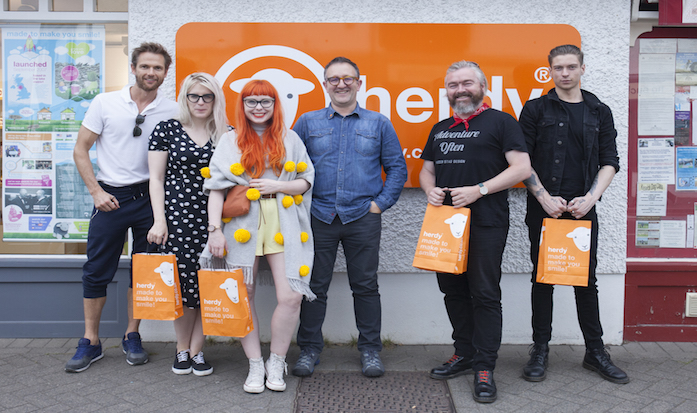Wool Wander takes Cumbria

This week we welcome guest blogger, Mark Hogarth, who embarked on a Wool tour of Cumbria. Check out his #WoolWander2 takeover on our Instagram channel.
For centuries old the three native breeds of Cumbria (Rough Fell, Herdwick and Swaledale) have formed the backbone of the rural economy in this uniquely beautiful part of Northern England. The #woolwander2 set out yesterday to learn about how wool is being used in new and innovative ways across the region.
“That is where I used to burn the clip back eight years ago when we were getting 20p a kilo for our fleeces” says the remarkable Shepherdess Alison O’Neill. Today things are different. As a group of bloggers and writers look on taking notes, Alison gathers her prize clip and readies it for for first phase of a process that will end up with yarn being woven into high-end interiors or outerwear. The first stop of this Woolwander is at the serene Shacklabank farm on the southeast border of the Lake District and the North Yorkshire dales and it is incredible to see textile provenance in action set amidst such a stunning location.

Farfield Mill is both a craft centre and a working art space. The turbine may no longer power the mill but there remains plenty of industry through the skilled artisans making everything from pottery to tweed. The basement plays host to a traditional double width warping frame and classic shuttle loom.Farfield Mill also hosts the studio collection of Alison O’Neill’s Shepherdess collection.
With time the enemy our merry band of bloggers set off across the southern Lake District and up the Duddon valley to meet a talented fox. David Evans has been writing about menswear and the nuts and bolts of the British fashion industry for over five years through the Grey Fox Blog. He has had an attachment to Cumbria for decades and described how there has been a heightened sense of interest in the area through the writing of James Reebanks and the successful use of Herdwick wool in the designs of Cherchbi.

Traversing a tiny windy road up the Duddon valley to Keswick was a chance to see the cheeky faces of the Herdwicks’ contently munching on the fell grass. It was the character of the sheep that inspired the Herdy brand. Spencer Hannah, co-founder and director of the Herdy company met us at one of their quirky retail spaces in Keswick. The Herdy company now employs 15 people across three stores backed by a successful on-line business and has put 20k back into the community. Spencer added; “since we set up the company in 2007, we’ve nurtured strong links with our local shepherds and, through the ‘herdyfund’, put back into the region through knowledge share and sponsored projects to help sustainable upland fell farming and the protection of the Herdwick sheep breed. We have also enjoyed the support of The Campaign for Wool in building the brand.”

In addition to fashions and interiors, Cumbrian wool is being used as an eco-friendly alternative for insulation. Christine Armstrong of Thermafleece; “As well as being a locally grown, rapidly renewable raw material, wool’s ability to absorb and release moisture and lock up some harmful VOC’s make it an ideal choice where healthy, breathable construction is key.”
#Woolwander2 Cumbria was an opportunity to see the best of the wool industry in a truly beautiful part of the world. The nightmares of foot and mouth disease and meaningless prices for wool have been consigned to the past and an exciting future full of innovation and craft awaits.
Mark Hogarth, Wool Council





